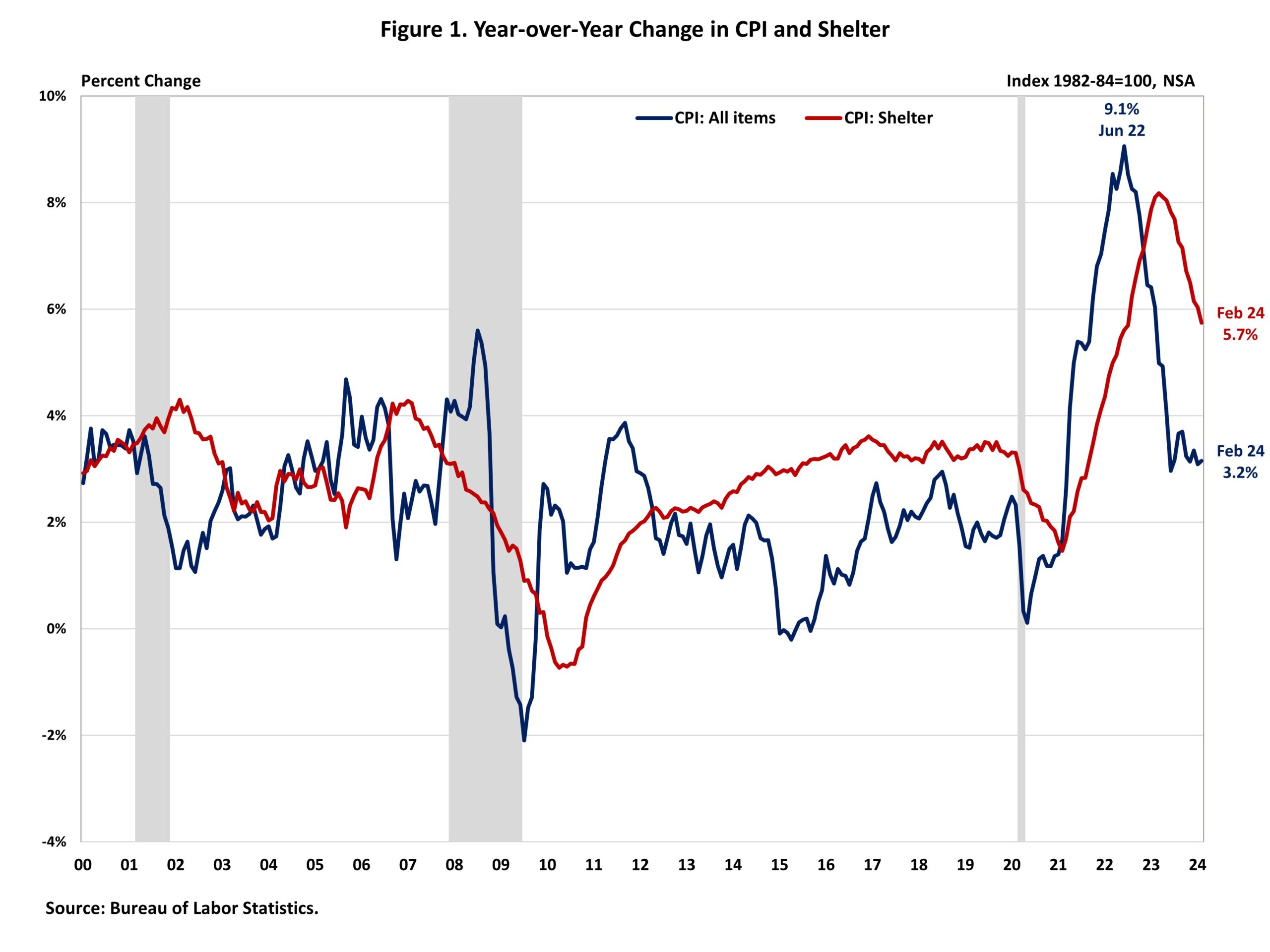Consumer prices in February saw another uptick, primarily fueled by the increases in shelter and gasoline prices, which contributed to over 60% of the total increase. Despite a slowdown in the year-over-year increase, shelter costs continue to put upward pressure on inflation, accounting for roughly two-thirds of the total increase in all items excluding food and energy. Given the ongoing elevated inflation, the Federal Reserve is expected to delay rate cuts until the second half of the year.
The Fed’s ability to address rising housing costs is limited because increases are driven by a lack of affordable supply and increasing development costs. Additional housing supply is the primary solution to tame housing inflation. The Fed’s tools for promoting housing supply are constrained.
In fact, further tightening of monetary policy would hurt housing supply because it would increase the cost of AD&C financing. This can be seen on the graph below, as shelter costs continue to rise despite Fed policy tightening. Nonetheless, the NAHB forecast expects to see shelter costs decline further in the coming months. This is supported by real-time data from private data providers that indicate a cooling in rent growth.
With respect to the aggregate data, the Bureau of Labor Statistics (BLS) reported that the Consumer Price Index (CPI) rose by 0.4% in February on a seasonally adjusted basis, after rising 0.3% in January. The price index for a broad set of energy sources rose by 2.3% in February as all of its component indexes increased. Meanwhile, the food index and the food at home index were both unchanged in February. Excluding the volatile food and energy components, the “core” CPI rose by 0.4% in February, as it did in January.
In February, the index for shelter (+0.4%) and gasoline (+3.8%) continued to be the largest contributors to the monthly increase in the overall CPI, accounting for over sixty percent of it. Among other top contributors that rose in February include indexes for airline fares (+3.6%), motor vehicle insurance (+0.9%), apparel (+0.6%) and recreation (+0.5%). Meanwhile, the top contributors that experienced a decline in February include indexes for personal care (-0.5%) and household furnishings and operations (-0.1%).
The index for shelter makes up more than 40% of the “core” CPI. The index saw a 0.4% rise in February, following an increase of 0.6% in January. The indexes for owners’ equivalent rent (OER) increased by 0.4% and rent of primary residence (RPR) rose by 0.5% over the month. These gains have been the largest contributors to headline inflation in recent months.
During the past twelve months, on a non-seasonally adjusted basis, the CPI rose by 3.2% in February, following a 3.1% increase in January. The “core” CPI increased by 3.8% over the past twelve months, following a 3.9% increase in January. This was the slowest annual gain since May 2021. Over the past twelve months, the food index rose by 2.2% while the energy index fell by 1.9%.
NAHB constructs a “real” rent index to indicate whether inflation in rents is faster or slower than overall inflation. It provides insight into the supply and demand conditions for rental housing. When inflation in rents is rising faster than overall inflation, the real rent index rises and vice versa. The real rent index is calculated by dividing the price index for rent by the core CPI (to exclude the volatile food and energy components). The Real Rent Index rose by 0.1% in February.




